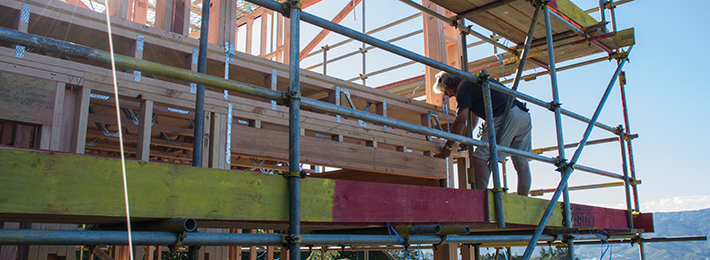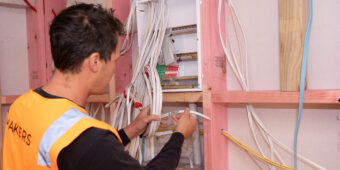Smart scaffolding
17 Jan 2017, Building and housing, Featured

Scaffolding work usually occurs within a larger context and can be impacted by other activities on a worksite. It’s important that you plan for and manage these activities in consultation with other PCBUs and workers when bringing scaffolders onto site
Site management includes everything from ensuring there are the right facilities, PPE, and equipment to do the work, to site-specific issues such as traffic management or containment of hazardous substances.
All associated risks, including any related to connected work such as construction, must also be controlled so they do not cause harm to anyone.
That’s why it’s important you must implement a safe system of work before any scaffolding work starts, to ensure it takes place in the right location, with the right plant and equipment on site, and with the right workers with relevant competencies.
Communication is key
Make sure to engage with anyone carrying out the work and their representatives when developing the safe system of work. Cooperate, coordinate and consult with other PCBUs so far as is reasonably practicable. A safe system of work should include:
- Engaging workers.
- Assigning responsibilities.
- A safe work method statement.
- Consulting a competent person regarding any temporary works design.
- Identifying any health and safety hazards and risks.
- Carrying out a risk assessment.
- Describing how you will control any identified risks.
- Describing how controls will be implemented, monitored and reviewed.
- Communication systems.
- Accident investigation and reporting methods.
- Emergency procedures.
Assess the site
Before work assembling scaffolding begins, you should undertake a site assessment. Be sure to consider the following:
- What is the purpose of the scaffold, and who will be using it?
- What is the nature of the ground, surface or structure on which the scaffold is to be erected? Does it need to be verified for load-bearing capacity?
- How will the scaffold be stabilised from overturning? If it will be tied to a structure, how will this be done?
- Will the scaffold be subject to environmental loads such as wind, vehicle impact, or snow?
- How will workers and vehicles access the site and work area for storage of material and equipment?
- Does the scaffolding create risk for workers on and/or around it?
- Are there electrical conductors or cables in the vicinity of the scaffold? Could the scaffold or workers come into contact with them at any stage of the scaffolding process?
It’s important to be aware of these issues right throughout the process, including during delivery of equipment, scaffold erection, scaffold use and dismantling/removal.
Site management
Ensure that you’ve considered the following before bringing any scaffolding material onto site:
- Is there sufficient space to erect the scaffold and store scaffold materials?
- Is the scaffold to be erected on a public roadway or footpath, and what are the local authority requirements?
- How will the site be protected from unauthorised access?
- Is pedestrian access through the site required? How will this be managed?
- Is a specific traffic management plan required?
- Are there any other potential hazards specific to the site?
- Does the work need to be notified to WorkSafe?
- Should anyone else be notified?
- Securing the work area.
Your site security should consider all risks to workers and others. Establish the work activity’s boundary before securing the work area – it may be smaller than the whole workplace, so as a work activity moves, its boundary moves with it.
As the work boundary moves, you should, so far as is reasonably practicable, eliminate or minimise risk to workers and others outside the work activity.
Nearby workers have a responsibility to take reasonable care that their actions (or lack of actions) do not put themselves or others at risk.
They must also comply with any reasonable instruction given by the PCBU, as far as they are reasonably able to. When organising site security and access, consider:
- Warning or hazard signs.
- Supervising authorised visitors.
- The risk of unauthorised access occurring (consider schools, parks, shops or other public places, or amenities and events nearby).
- Pedestrians and other members of public.
- Other workers and mobile plant on site.
- Vehicle traffic control within and near the site.
- Delivery points, including vehicle access and egress.
- Immobilising/locking vehicles.
- Safe and secure storage of materials (eg, stacked equipment).
- Control of energy sources (eg, temporary mains service boxes).
- Suitably designed and constructed physical barriers (eg, safety fences, lockable gates, or covers).
The above is taken from Good Practice Guidelines: Scaffolding in New Zealand.
Full text can be found here.
Register to earn LBP Points Sign in



